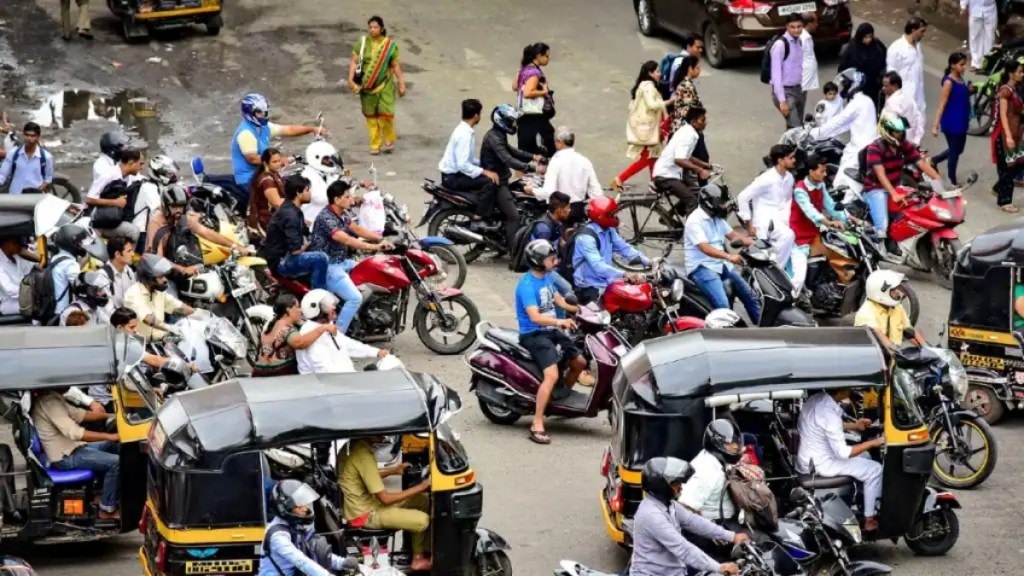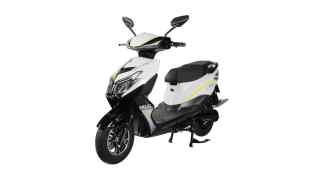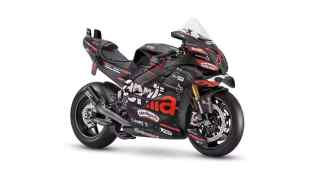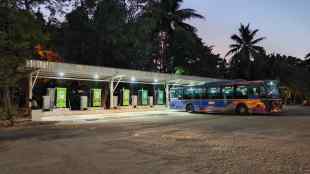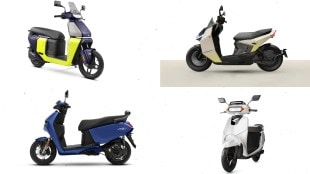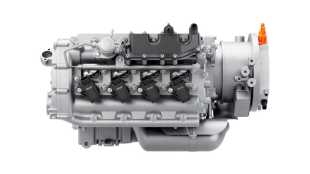For a developing nation like India, roads are an instrumental factor in infrastructure growth in India. Despite the quantity and quality of roads improving significantly over the past few years, what has also increased is the number of accidents on roads which now only causes loss of life and property but hampers the overall growth of the nation.
A major reason for the ever increasing road accidents is obviously more vehicles on roads but more importantly lack of knowledge or total disregard for traffic regulations in our country. Most of the people don’t even know what the different road signs in India signify. Let’s start with knowing the different traffic signs and understanding their real word significance.
Traffic Signs in India
Traffic signs are broadly divided into three categories— Mandatory, Cautionary, and Informatory.
Mandatory Signs: These signs are meant to communicate an obligatory instruction or a prohibition. These signs are usually circular in shape with a white background and a red border. On failing to follow these signs, a person will be penalised by concerned authorities.
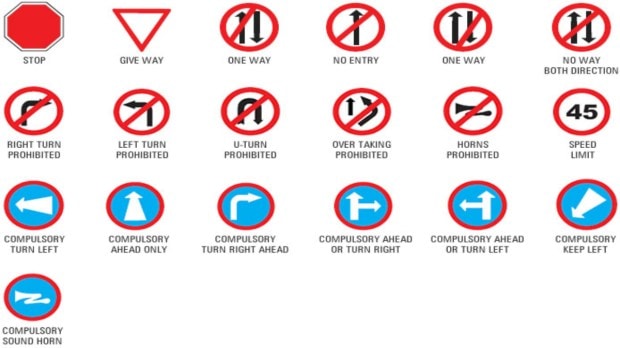
Cautionary Signs: These signs warn drivers about potential threats or safety hazards ahead on the road. Drivers should take necessary steps or slow down their vehicles according to cautionary signs given on the road.
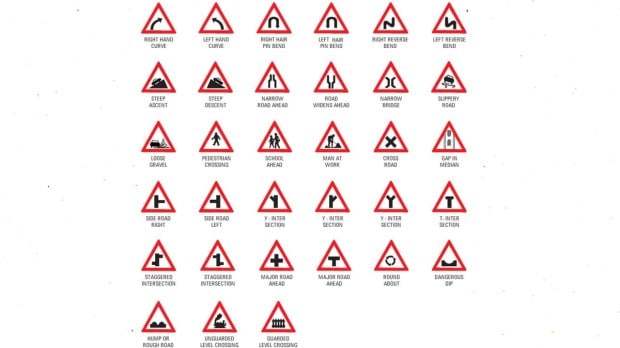
Informatory Signs: These traffic signs are designed to provide information to drivers, cyclists, and pedestrians on the road. These signs are usually rectangular in shape with a blue background and white text.
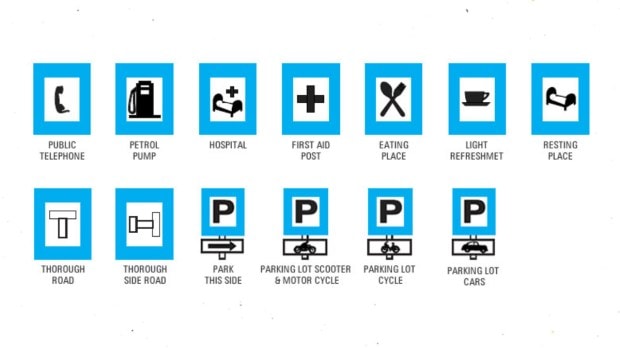
Hand Signals by Traffic Police
In addition to the visual traffic signals on sign boards mentioned above, there are several other manual traffic signals displayed by traffic police officials. These hand signals help regulate traffic and direct drivers, pedestrians, and other road users.
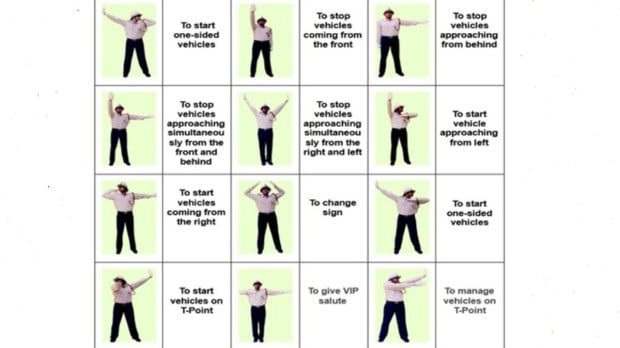
Here are the ten hand signals used by traffic police in India and their meanings:
- Stop: The palm faces the oncoming traffic, with the arm outstretched to signal vehicles to stop.
- Go: The arm is outstretched with the palm facing upwards, signalling vehicles to proceed.
- Slow Down: The hand moves up and down in a motion that indicates the need for vehicles to reduce their speed.
- Move to the Left: The right arm is extended and points towards the left, signalling drivers to move to the left lane.
- Move to the Right: The left arm is extended and points towards the right, signalling drivers to move to the right lane.
- Straighten Up: The arm moves up and down with the palm facing down, indicating the need for drivers to move their vehicles in a straight line.
- Turn Left: The left arm is extended out to the side, pointing to the left, indicating that drivers should turn left.
- Turn Right: The right arm is extended out to the side, pointing to the right, indicating that drivers should turn right.
- U-Turn: The arm moves up and down in a circular motion, indicating that drivers should make a U-turn.
- Follow Me: The traffic police officer moves their arm in a circular motion, indicating that drivers should follow them.
Lane Markings
Apart from traffic signs, it is also important to learn about the different types of lane markings on the road. These markings act as guidelines for drivers and pedestrians on the roadways.
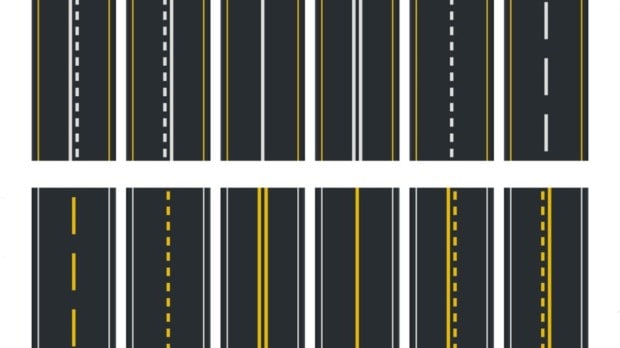
Here are some common road marking signs in India and their meanings:
- Broken White Lines: These lines separate two lanes of traffic travelling in the same direction.
- Solid White Lines: These lines indicate the boundary of the driving lane and should not be crossed.
- Double White Lines: These lines separate two lanes of traffic travelling in the same direction and should not be crossed.
- Broken Yellow Lines: These lines separate two lanes of traffic travelling in opposite directions and may be crossed if it is safe.
- Solid Yellow Lines: These lines indicate no passing and should not be crossed.
- Zigzag Lines: These lines indicate that parking is not allowed.
- Pedestrian Crossing Markings: These markings indicate where pedestrians can cross the road safely.
- Centre Lane Markings: These markings indicate a shared turning lane for vehicles travelling in opposite directions.
- Arrows: These markings indicate the direction of traffic flow.
- Stop Lines: These lines indicate where vehicles should stop at an intersection or before a pedestrian crossing.
